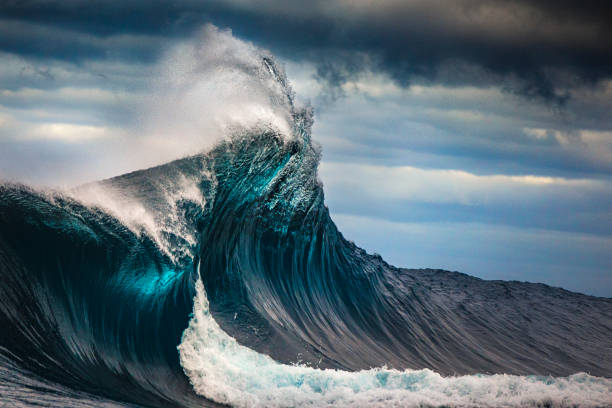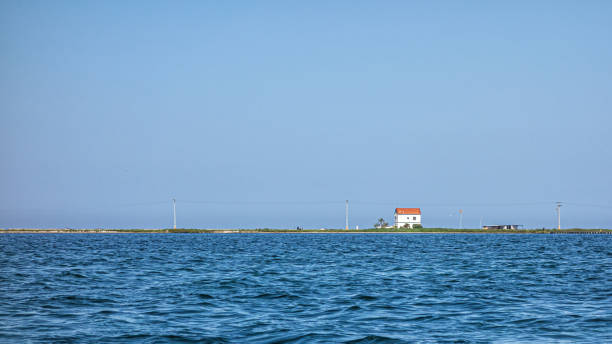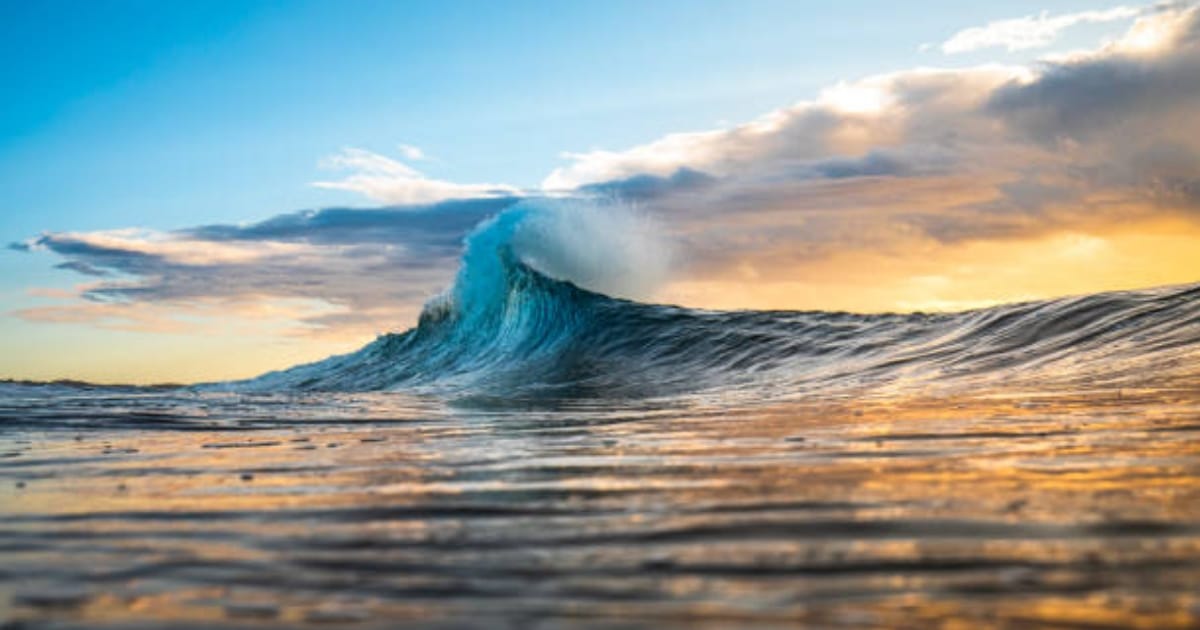What is The Largest Ocean on Earth?: Among all the oceans on Earth, the Pacific Ocean stands out as the largest and deepest. It covers nearly one-third of the planet’s surface and holds more than half of the world’s total water supply.
Stretching from the icy Arctic Ocean in the north to the Southern Ocean near Antarctica in the south, it spans an enormous area. On one side, it touches Asia and Australia, while on the other, it meets North and South America.
The Pacific Ocean is not just vast in size—it plays a crucial role in shaping the Earth’s climate, supporting diverse marine life, and influencing human history and development across centuries.

The Pacific Ocean isn’t just the widest ocean on Earth—it’s also the deepest. Its average depth is around 4,280 meters (14,040 feet), making it deeper than any other ocean on the planet. One of its most remarkable features is the Mariana Trench, located in the western Pacific. Within this trench lies the Challenger Deep, the deepest known point on Earth, plunging to an incredible depth of about 10,929 meters (35,856 feet).
Due to its vast size and extreme depth, the Pacific Ocean holds more water than all the other oceans combined, making it a dominant force in Earth’s water system.
The natural forces behind the formation of the vast Pacific Ocean are truly fascinating. Most of the Pacific lies on top of the Pacific Plate, the largest tectonic plate on Earth. As this massive plate shifts and collides with surrounding plates, it creates a geologically active region known as the “Ring of Fire.”
This Ring of Fire is a horseshoe-shaped zone around the Pacific Ocean, famous for its high number of earthquakes and volcanoes. These powerful natural events highlight how dynamic and ever-changing the Earth’s surface is, especially in areas surrounding the Pacific Ocean.
It’s important to understand how big the Pacific Ocean is because it affects many things in the world:
1.Climate Control: The Pacific Ocean holds a huge amount of water, which helps absorb and spread heat around the world. This affects the weather in many places. Events like El Niño and La Niña happen when the Pacific Ocean’s temperature changes. These events can change rain patterns, temperatures, and even farming results in many countries.
2.Rich in Marine Life: Even though the Pacific Ocean is huge, it is full of amazing sea creatures – from tiny plankton to giant whales. It has many different environments like colorful coral reefs, deep ocean floors, and hot underwater vents, each with its own special kinds of life. Taking care of this ocean life is very important for keeping our planet’s oceans healthy.
3.Economic Importance: The Pacific Ocean is very important for world trade. Big ships travel across it every day, linking countries and their economies. It also has a large fishing industry, which provides food for millions of people. To keep this ocean useful and healthy for the future, we must use its resources carefully and responsibly.
What is the GPU in the Redmi Pad 2? Full Graphics Review & Real Performance Explained
1.Which is the largest ocean on Earth?
The Pacific Ocean is the biggest and deepest ocean on Earth. It’s so large that it covers more area than all the land on the planet put together. It stretches from the Arctic in the north to the Southern Ocean in the south, and lies between Asia, Australia, and the Americas.
It holds more than half of the Earth’s free water and includes the deepest place on Earth — the Challenger Deep in the Mariana Trench. Because of its size and depth, the Pacific Ocean helps control the world’s climate, supports a wide variety of sea life, and is very important for global trade and travel.
2.What are the 5 oceans largest to smallest?
There are five oceans in the world, listed from biggest to smallest:
- Pacific Ocean is the largest and deepest ocean on Earth, spanning more than one-third of the planet’s surface. Its immense size and depth make it a key component of Earth’s geography and climate system.
- Atlantic Ocean is situated between the continents of North and South America on the western side, and Europe and Africa on the eastern side. It is the second-largest ocean on Earth and plays a major role in global navigation, climate regulation, and commerce. It is the second-largest ocean in the world and serves as a major route for international trade and travel.
- The Indian Ocean is famous for its warm waters and strategic importance in global trade. It is bordered by South Asia to the north, Africa to the west, and Australia to the east. As the third-largest ocean in the world, it supports rich marine life and serves as a crucial route for international shipping. As the third-largest ocean, it plays a vital role in global climate, trade, and marine biodiversity.
- Southern Ocean – surrounds Antarctica and was named more recently.
- Arctic Ocean – the smallest and shallowest ocean, mostly covered with ice and located near the North Pole.
3.Which is the smallest ocean?

The Arctic Ocean is the smallest of the five main oceans on Earth. It is located around the North Pole and is surrounded by North America, Europe, and Asia. It’s also the shallowest ocean, and most of its surface is covered with ice for much of the year. Even though it’s small, the Arctic Ocean is very important for keeping the Earth’s climate balanced. It is home to special and tough animals and plants, but it is now being affected by climate change.
In conclusion:
The Pacific Ocean is the biggest and most amazing ocean on Earth. Its huge size, great depth, and active natural forces make it a fascinating topic for scientists. It plays a major role in controlling the Earth’s weather, supporting sea life, and helping people around the world. That’s why it’s so important to keep learning about it and protecting it for the future.
